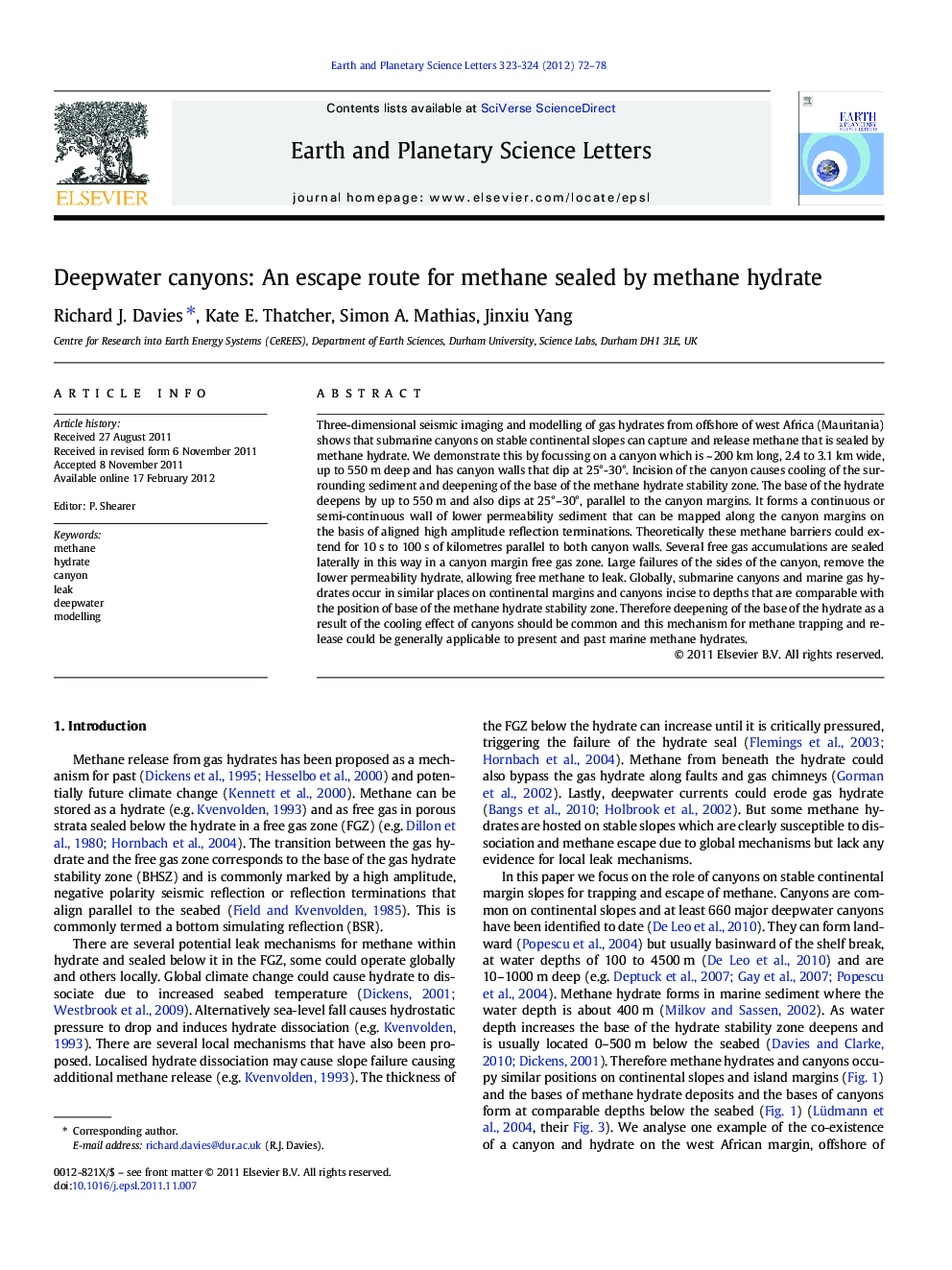| کد مقاله | کد نشریه | سال انتشار | مقاله انگلیسی | نسخه تمام متن |
|---|---|---|---|---|
| 4677557 | 1634809 | 2012 | 7 صفحه PDF | دانلود رایگان |

Three-dimensional seismic imaging and modelling of gas hydrates from offshore of west Africa (Mauritania) shows that submarine canyons on stable continental slopes can capture and release methane that is sealed by methane hydrate. We demonstrate this by focussing on a canyon which is ~ 200 km long, 2.4 to 3.1 km wide, up to 550 m deep and has canyon walls that dip at 25°-30°. Incision of the canyon causes cooling of the surrounding sediment and deepening of the base of the methane hydrate stability zone. The base of the hydrate deepens by up to 550 m and also dips at 25°–30°, parallel to the canyon margins. It forms a continuous or semi-continuous wall of lower permeability sediment that can be mapped along the canyon margins on the basis of aligned high amplitude reflection terminations. Theoretically these methane barriers could extend for 10 s to 100 s of kilometres parallel to both canyon walls. Several free gas accumulations are sealed laterally in this way in a canyon margin free gas zone. Large failures of the sides of the canyon, remove the lower permeability hydrate, allowing free methane to leak. Globally, submarine canyons and marine gas hydrates occur in similar places on continental margins and canyons incise to depths that are comparable with the position of base of the methane hydrate stability zone. Therefore deepening of the base of the hydrate as a result of the cooling effect of canyons should be common and this mechanism for methane trapping and release could be generally applicable to present and past marine methane hydrates.
► Submarine canyon incision causes a deepening of the hydrate stability zone.
► This creates a steeply dipping wall of hydrate that acts as a seal for methane.
► Canyon margin failures cause escape of this store of methane.
► This is a new mechanism for trapping and release of methane.
Journal: Earth and Planetary Science Letters - Volumes 323–324, 15 March 2012, Pages 72–78